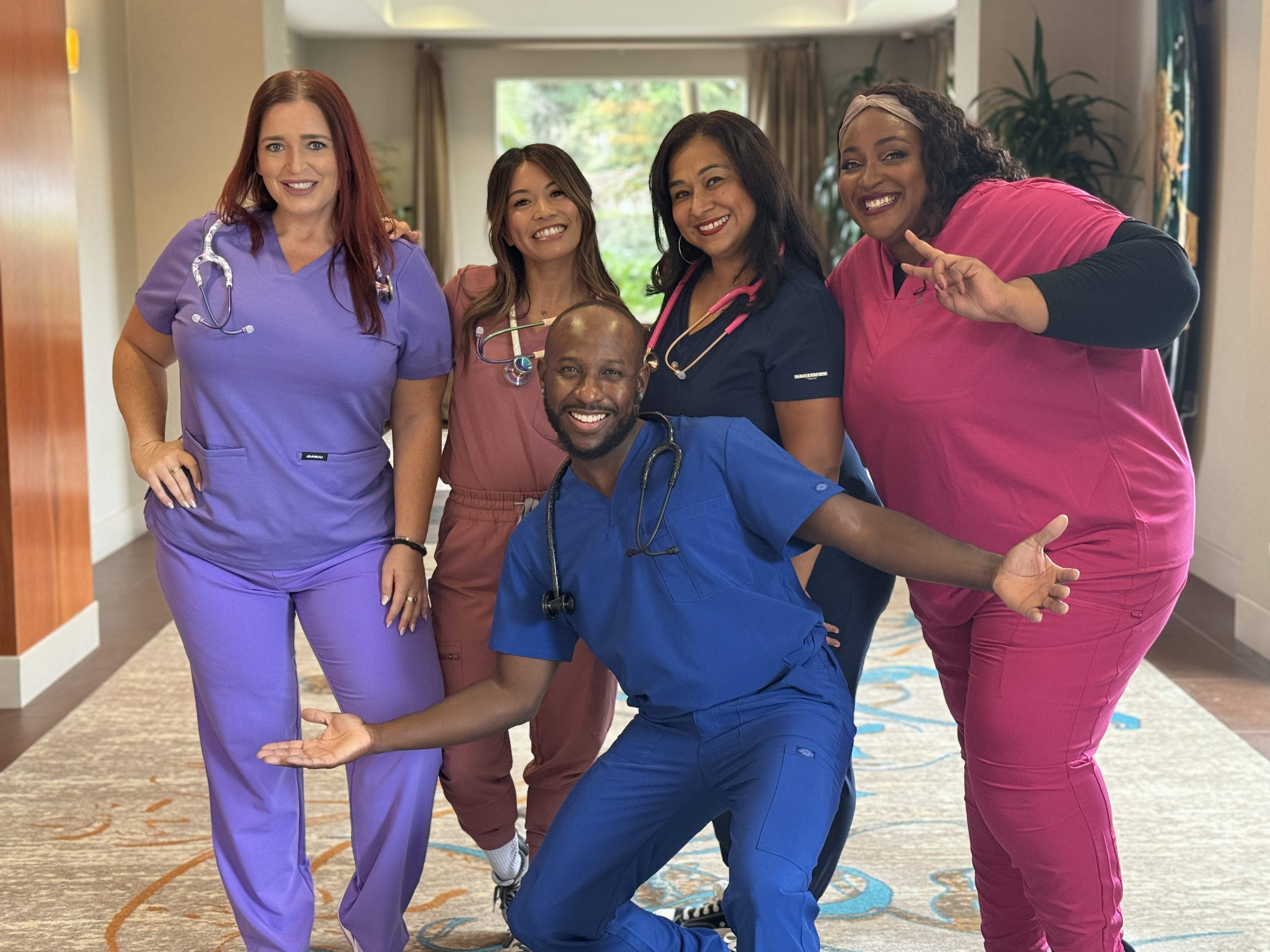From Caps & Aprons to Crocs & Joggers: The Evolution of Nurse Uniforms


Image source: MTI of New York
If you close your eyes and think “nurse uniform,” your mind probably flips through a highlight reel: nun habits and Nightingale whites, crisp caps starched to perfection, pastel cartoon scrubs, and finally today’s jogger sets paired with Crocs and colorful badge reels.
But nurse fashion has never just been about fabric—it’s a tapestry of identity, authority, rebellion, and evolution stitched through centuries of caregiving, media portrayals, and stylish reinvention.
From Nun Habits to Nightingale: The Birth of the Uniform
Early nursing attire borrowed directly from religious figures—nuns often cared for the sick, so the habit became the unofficial prototype for what would become formal nursing wear. Florence Nightingale, credited with founding modern nursing during the Crimean War in the 1860s, helped codify this into a professional uniform: long-sleeved dresses, aprons, and caps—practical, modest, and symbolic of a new standard in caregiving.
That uniform wasn’t invented for pretty; it was a tool of professionalism, hygiene and feminine virtue—an identity crucial for nurses to distinguish themselves as trained and respectable in a male-dominated society. The design established a recognizable look that signaled nurse authority and separation from domestic caregivers. Nightingale’s school at St. Thomas’ Hospital, founded in 1860, cemented this as the visual promise of a trained professional.
Image source: National Portrait Gallery, London
War Posters and the “Angel of Mercy” Aesthetic
World Wars I and II were pivotal in transforming nurse uniforms. The demands of wartime nursing made bulky aprons and floor-length dresses impractical. As a result, uniforms adopted shorter skirts and sleeves for mobility, and some nurses even began wearing pantsuits in the 1940s—a far cry from the historic feminine dresses. Military nurses wore uniforms with badges and tippets (short cape-like garments) denoting rank. The all-white uniform became widespread in hospitals during this time to emphasize cleanliness and professionalism.
Nurses became national icons—“angels of mercy” draped in immaculate whites and Red Cross veils. These images didn’t just advertise a profession, they mythologized nurses, turning them into national symbols—nurturer, patriot, near-saint. Those images still shape how the public “sees” nurses.
Image source: Library of Congress
How Scrubs Took Over
Sterility, not style, sparked the shift. Surgeons originally wore all-white attire to emphasize cleanliness, but under bright lights, the glare was brutal—and white clothes made blood stains shockingly visible. By the mid-20th century, hospitals introduced green and blue scrubs. These softer tones reduced eye strain and helped improve visual contrast during operations.
By the 1970s, scrubs had evolved into today's familiar ensemble—V-neck tops, drawstring pants in cotton or poly-blends, leaving OR exclusivity and becoming common hospital-wide wear. Nowadays, scrubs span a spectrum of colors—used for role identification and unit distinctions—creating a visual map of modern healthcare teams
The entry of more men in nursing and the desire for more practical, comfortable clothing also led to the adoption of scrub tops and pants. Caps, once a nursing staple, began disappearing—partly because they became more hassle than help.
Image source: NIH/Library of Medicine
When Uniforms Meet Pop Culture
Uniforms can be dramatic. Nurse Ratched’s crisp white in One Flew Over the Cuckoo’s Nest embodied severity. Grey’s Anatomy turned scrubs into aspirational fashion, even spawning a licensed “Grey’s Anatomy” line from Barco.
Halloween aisles, meanwhile, resurrect the “sexy nurse” trope every October—a thorn in the profession’s dignity, regularly called out by nursing advocacy groups for trivializing skilled work.
Image source: Fandom
Scrubs Go Viral: Comfort Meets ScrubTok Style
The pandemic thrust scrubs into global pop culture. Crocs became an unofficial mascot for healthcare “comfort culture.” At the same time, ScrubTok went mainstream: nurses shared fit-checks, scrub hauls, and quick transitions from 12-hour shifts to checkouts in viral videos.
Today’s scrubs blend function and flair—antimicrobial fabrics, jogger cuffs, stretchy fits, and customizable colors—designed for performance and personality. Hospitals may dictate color policy, but cuts and features now cater to comfort and expression—from moisture-wicking to specialized pocket layouts.
Scrubs have become collector’s items, content fodder, and community currency. They allow nurses to project identity, break stereotypes, and invite recognition—because the uniform may not define the professional, but it does help the world see them differently.
Are you in the market for new, stylish scrubs? Check out Nurse.org’s Best Scrubs for Nurses!

🤔 Nurses, what’s your favorite scrub style? Share your thoughts in the discussion forum below.
If you have a nursing news story that deserves to be heard, we want to amplify it to our massive community of millions of nurses! Get your story in front of Nurse.org Editors now - click here to fill out our quick submission form today!






